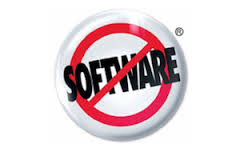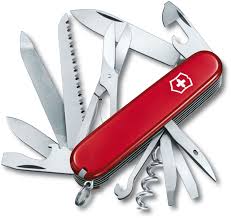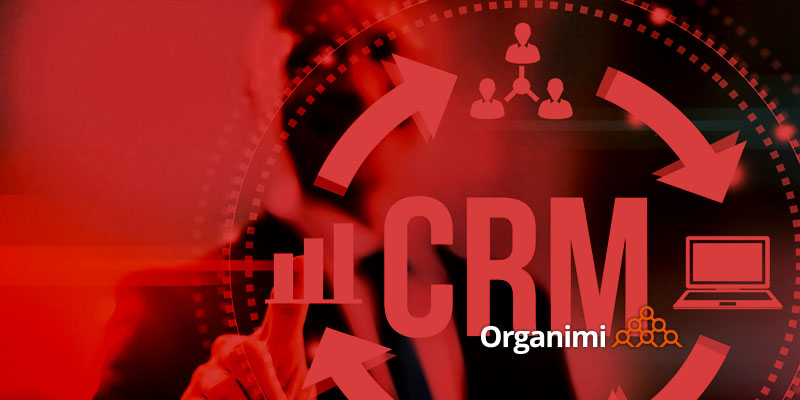I still remember my first introduction to Salesforce.com, a couple of companies ago.
At the time, almost 15 years ago “CRM software” meant Siebel Systems, a complex enterprise software system with a high sticker price, and even higher implementation costs, sold mainly to large enterprises. Backed by a huge marketing budget, Siebel sold well, reaching 45% market share. But implementations were challenging, and often failed, because of the cost and complexity of making an out of the box CRM software system integrate well with legacy systems and a myriad of disparate enterprise applications and databases…not to mention an insatiable set of ever changing end user demands.

My sales team leader, Steve Ritchie, pushed for a new solution called Salesforce and we got a demo from its implementation partner BlueWolf (not the Mongolian wrestler). Their implementation specialist aka sales engineer was able to demonstrate in our first discovery session the power of Salesforce’s cloud based “no software” deployment model and the ease with which users could self-configure to map their Salesforce implementation to their existing business processes. We were hooked at hello.

“Customization” was a bad, high cost word. It implied armies of IT specialists, a brittle high cost system, and long and complex change management processes. “Configuration”, the Salesforce alternative, was relatively painless and powerful. Even non-programming idiots like me could easily make Salesforce work within the context of our company, without the time, cost and complexity of the traditional enterprise CRM solutions. No surprise BlueWolf built a global implementation company bought by IBM, just by focussing on implementing Salesforce.
When we introduced Organimi to the market, as the world’s first purpose-built-from-the-ground up, cloud based, organizational design tool, we wanted to do the same thing: make it easy for organizations of all kinds around the world to create, customize and share their organizational charts, photoboards and directories, so that our customers could access, update and share their org charts anywhere, at any time with anyone they wanted to.
We still have a long way to go, but with tens of thousands of users and hundreds of customers, we think we are on the right track. Earlier this year, we introduced “custom fields” to Organimi making it easy for users to not only create and share their basic organizational structure information, but also to add custom fields uniquely suited to their own organizational requirements. All this without the cost and complexity of traditional implementation cycles or placing demands on scarce, highly valuable IT team resources that are often deployed elsewhere on more mission critical IT projects. Think of Organimi – now with enhanced formatting and layout options as well – as the Swiss Army Knife of org charts and organizational design – all the tools are there, at your own finger tips, to do pretty much all that you want to do.

So what has the result been, and where do we see things going? Since Organimi supports both structured and unstructured data, with text, numerical, url and other data types, and since users can choose to share or keep custom fields private, we thought it would be interesting to see where our users want to see Organimi go, and what we can do to help them achieve their goals.
We’ve had lots of users experimenting with custom fields, such as:
‘ACTUAL NAME’,
‘BASE LOCATION’,
‘BIRTHDAY’,
‘BONUS STRUCTURE’,
‘BRANCH LOCATION’,
‘BUSINESS UNIT’,
‘CONTRACTOR’,
‘CV’,
‘DATE OF HIRE’,
‘DEPARTMENTS YOU WORK WITH’,
‘EMPLOYEE GROUP’,
‘ENTITE’,
‘FIELD OF EXPERTISE’,
‘FLIGHT RISK’,
‘HOBBIES’,
‘HOME LOCATION’,
‘INTERVIEWEE’,
‘KEY COMPETENCIES (PREREQUISITES)’,
‘LINKED IN PROFILE’,
‘LOCATION’,
‘MONTHLY QUOTA’,
‘ON MATERNITY’,
‘POSITION SALARY’,
‘PROJECT’,
‘REVENUE’,
‘SKYPE’,
‘START DATE’,
‘SUPPLIER’,
‘SUPPORTER’,
‘TEAM’,
‘TEMPORARY’,
‘TV FAVORITES’,
‘TWITTER PROFILE’,
‘VIDEO LINK’,
‘WEBSITE PROFILE’,
‘WHEN JOINED’,
‘YEARS WITH COMPANY’
Clearly there is a rich, diverse and growing set of user requirements to customize or configure (we don’t care how you describe it!) their Organimi org charts for their own unique needs. By continuing to build out support for custom fields, making them searchable, making it easy to filter and display them, and making it easy to share the results through a multitude of views into the same organizational design, we hope to make the experience of all of our users richer and more informative as they connect, communicate and collaborate at work.
We think these capabilities and this flexibility will become increasingly important as organizations continue to evolve from the “command and control” architectures of traditional organizations populated with full and part time staff, to more fluid boundaryless structures with virtual workers, virtual teams and entire virtual organizations configured in the same “loosely coupled” personnel architectures as the cloud has made possible for business models and technology platforms more generally.
Where will this trend lead us? In a recent blog we talked about Robin Chase’s Peers Incorporated, a must read book on the power of harnessing the strengths of combining the best of people power and the best of corporate power. I also just finished reading an even more radical prescription about the future of work: The Four Hour Work Week. Author Tim Ferriss challenges many of the fundamental assumptions of the traditional 9 to 5, career-as-life mindset that characterized success in days past, and typified the work experience of many in my generation, arguing that owners need to make themselves “Ghosts In The Machine” – obsolete in the operation (largely through outsourcing) of their business enterprises. He makes the same argument for employees, advocating for an entirely different approach to the way they organize their work lives and work-life balance. Organizations are large and messy things; but they are also continuously evolving, searching and self-optimizing; demonstrating an uncanny survival instinct that is more important now then ever.
Can Organimi help you? Here’s a test: use one of Organimi’s custom fields (as some already are) to describe the members of your org chart – and even departments – as full-time, part-time, contingent, or entirely outsourced to another organization. You’ll start to see how some of these trends are starting to infiltrate your organization, and perhaps get a sense of how your organization is evolving. Looking to project your organization into new domains – whether product, regional or functionally based? See how you can meld a virtual architecture on to your current organizational design.
You can try it here. Whether you call it customizing or configuring, Organimi makes it easy for you to create awesome org charts, now with your own data to meet your own unique needs, whatever type of organization you are now and are becoming tomorrow…in minutes.
As always, thanks for reading.
The Organimi Team

